PicoCTF 2018 - Radix's Terminal WriteUp
Here we have another reverse challenge:

Let’s see inside this:
This part is simple, there are 3 branches, one for the “missing password”, one for the “wrong password” and the last for “correct password”.
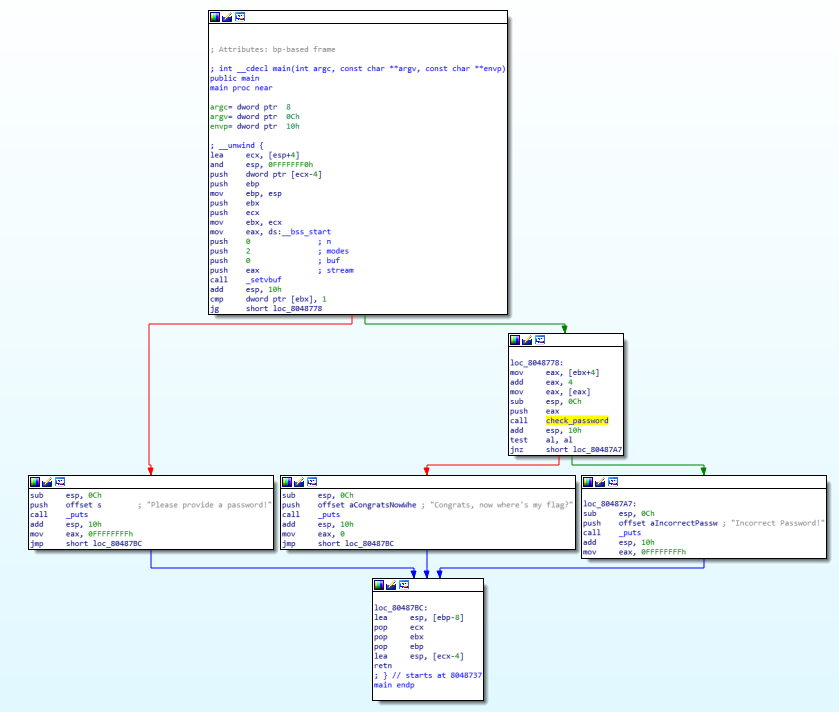
Notice when we take this last branch seems that the flag isn’t actually printed, but only a message with “So where is my flag?”
That’s probably mean that the flag is the password itself.
check password
This function isn’t really easy to reverse, but let’s have a look slowly:
in the first block we notice that the password is measured with a strlen:

Next, we have a bifurcation which is basically a for loop on the password length.
Isn’t easy to follow, but here we can see that 3 chars of the password are taken: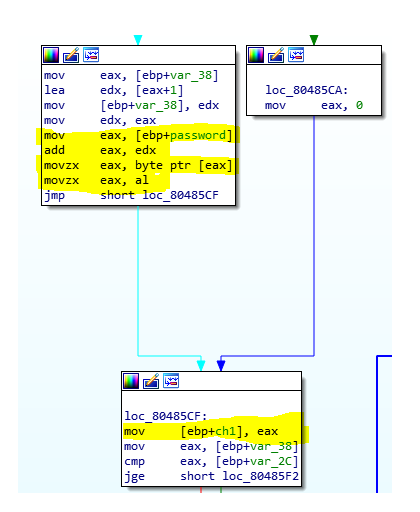
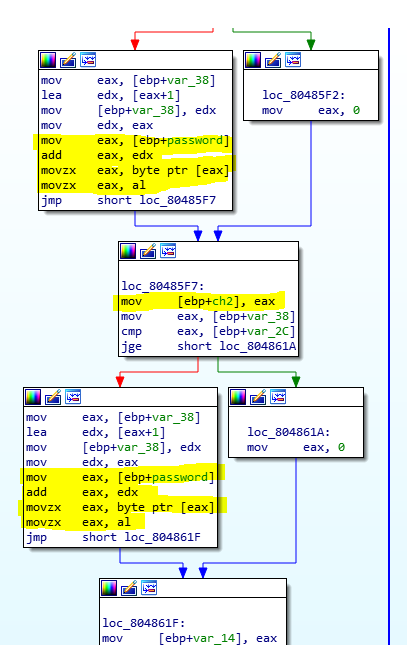
Whit those 3 chars (var14 is the last char taken from the password ) some operations are performed:
Focus first on the yellow part

What it does is:
1 | resoult(ebp+var_10) = (char2 << 8) + (char1 << 16) + char3; |
Next, we have some similar code repeated x4 times with only a small change on the shift (shr instructions):

Seems that it is doing:
1 | pass[j++] = alph[(resoult >> 18) & 0x3F]; |
alphabet is just a string of some chars (67):

we are close
after this for we see a strcmp:
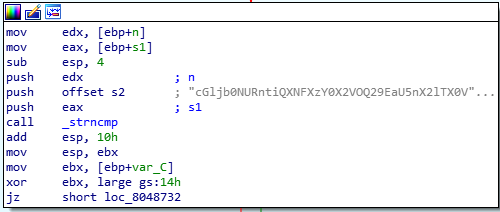
so here what’s happening here:
for every 3 chars of the password, 4 chars of a new string are generated.
This new string is compared to a fixed one, and if are equal we get a win.
The vulnerability?
The vulnerability here is that even if it is a 14 chars long password, we can “check” if it is right splitting it into groups of 4 since every group isn’t “correlated” whit the next.
That’s mean that a brute force has to check only (67^4)x4 possible combinations instead of 67^14.
We now put down some code to do this:
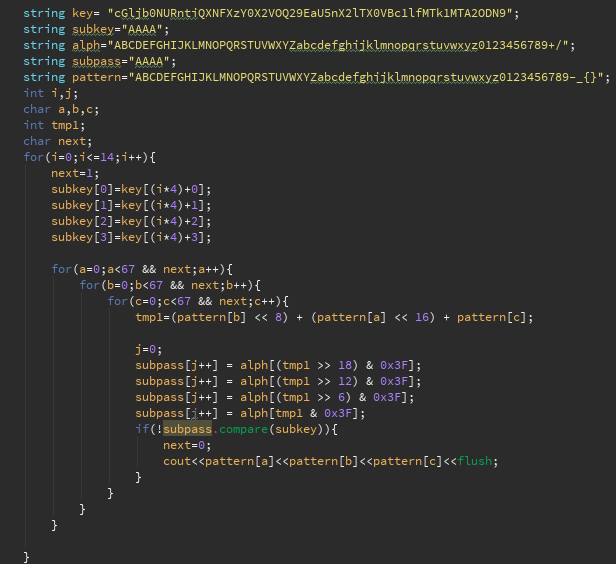
and here is the flag:
picoCTF{bAsE_64_eNCoDiNg_iS_EAsY_195***83}
Whait.. what? base64… oh.. well nevermind…
XxcoralloxX